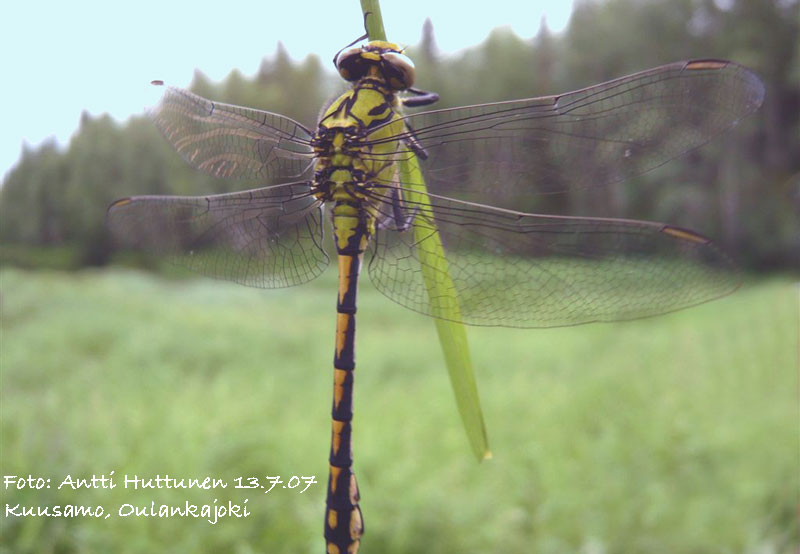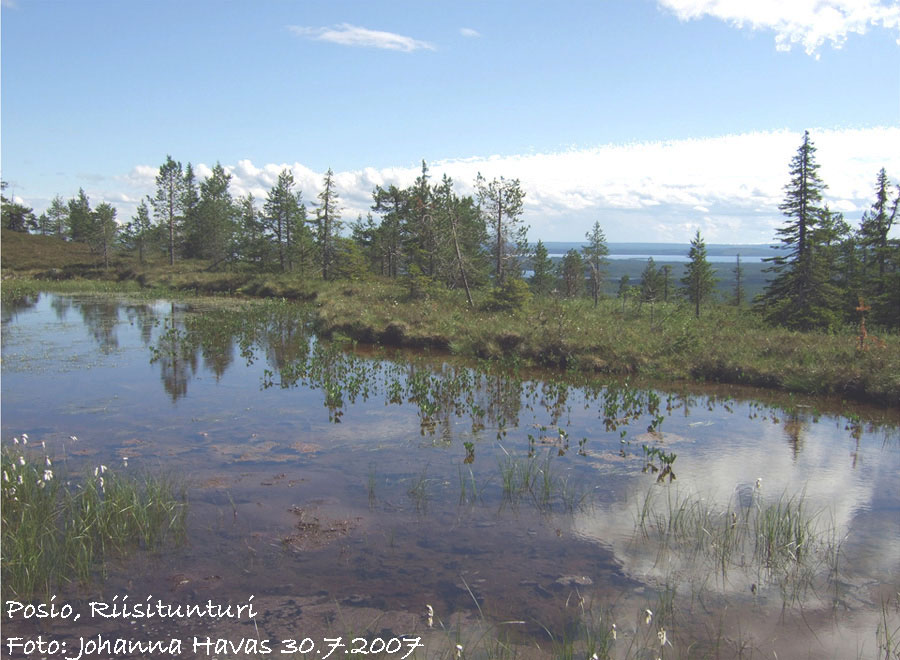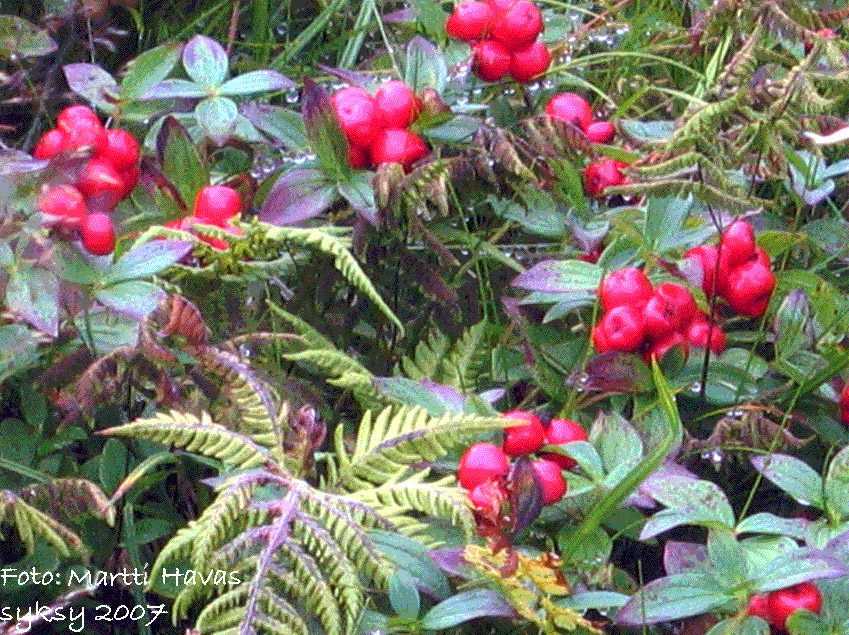

Kuvia pohjoisesta luonnosta
Photos from northern nature
(vuosi/year 2007)
Muihin valintoihin pääset palaamalla takaisin (käytä selaimen Back-painiketta)!
(Tai myös tästä!)
To picture-selecting and other menus: go back using the back-button of the browser!
(Or click here!)

Monia sudenkorentojakin löytyy Pohjois-Suomesta. Tässä pohjoinen harvinaisuus: kirjojokikorento (Ophiogomphus cecilia).
Antti Huttunen kuvasi sen Oulankajoen tulvaniityltä. Lisää: sudenkorennot! Lisää: tulvaniityt!
Some dragonflies are living also in Northern Finland. Here one of them: Ophiogomphus cecilia.
It is rare, living on the riversides; in this case on the water meadows of Oulankajoki river.

Tunturin lakiosan karu lampi, taustalla häämöttää Kitkajärvi. Lampi on matala, suorantainen, joten se
äätynee pohjiaan myöten talvella. Silti siinä viihtyvät mm. luhtavilla (Eriophorum angustifolium) (kuvassa mm. vas.)
raate (
Menyanthes trifolia) (kuvassa ylh. keskellä).
Lisää: rannat! ja suot!
Metsänrajan puut - mänty ja kuusi - ovat tykyn runtelemia. Lisää: tykky.
An oligotrophic pond on the top of Riisitunturi fjeld, lake Kitkajärvi comes into view on the background.
This pond is shallow and peated on the shores. The pond will freeze over in the wintertime.
Nevertheless some plants thrive in the water of pond, among others
cotton-grass (Eriophorum angustifolium) (on the left in picture)
and bogbean (Menyanthes trifolia) (in the middle of picture).
Moore: shores!, and mires!
(The trees - spruces and pines here on the forest border are damaged by tykkysnow.

Ruohokanukan (Cornus suecica) marjat ovat kypsänpunaisia ruska-aikaan, jolloin tämän kasvin lehdissäkin on usein sinipunainen ruskaväritys. Marjat ovat melko mauttomia. Ruohokanukka suosii mereistä ilmastoa; se on yleinen Lapin mereisillä alueilla (mm.monilla tuntureilla, varsinkin tunturikoivikoissa sekä Perämeren rannikolla).
Berries of dwarf cornel (Cornus suecica) are red in the falltime. There are in the autumn violet color on the leaves, too.
The berries aretasteless. Dwarf cornel favours maritim climate; it is common on the maritime areas in Lappland (among others on
the fjelds, especially in the mountain birch-forests) and on the nortern shores of Gulf of Bothnia.




